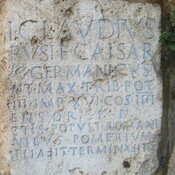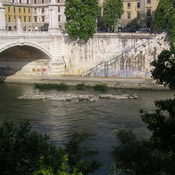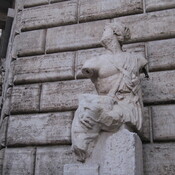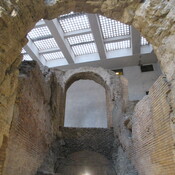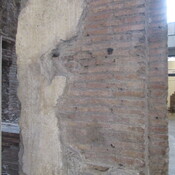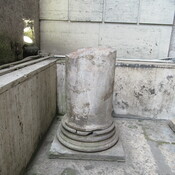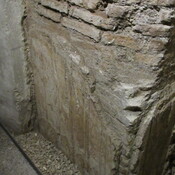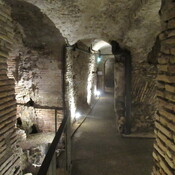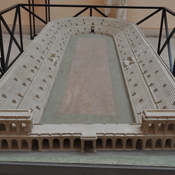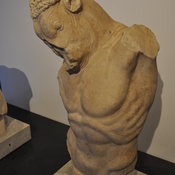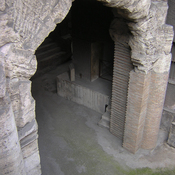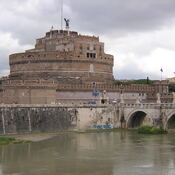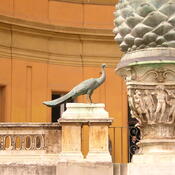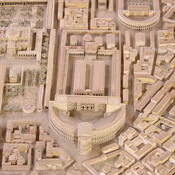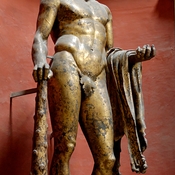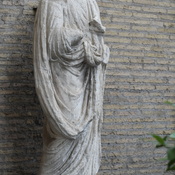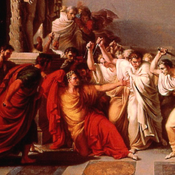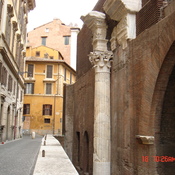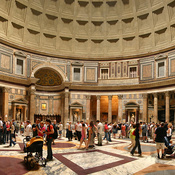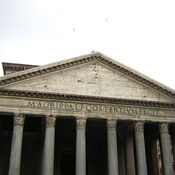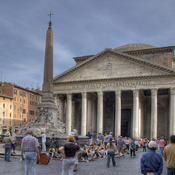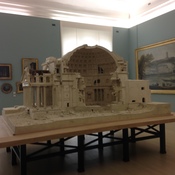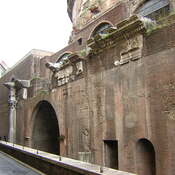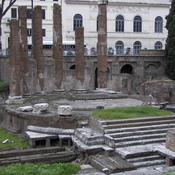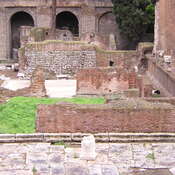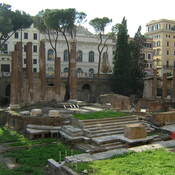Horseracing track (Philox., CGL 2.201) located in the West of Campus Martius. The term ‘trigarium’ is generally interpreted as the racing track for chariots drawn by three horses (trigae), an event held only in Archaic times (Dion. Hal., Ant. Rom. 7.73.2). Nonetheless, there could have been a revival of these races in the Imperial period (Coarelli, LTUR 89). The Trigarium served as the temporary racetrack (circus temporalis) of the ludi Saeculares (Pighi 1965, 118, 167) to host horse races (Coarelli 1977, 839); it not only shared a topographical contiguity with the Tarentum but also a typological association (Zos. 2.2.3). Perhaps other ceremonies of archaic character and involving horse races, such as the Equirria and the October equus, were held in the Trigarium (Coarelli LTUR 89).
Localisation:
- Italie, Vatican City
- geo:41.897358,12.466618
- Précision ± 5-25 m.
Period or year:
- -7xx / unknown
Classification:
- Théâtre
- Invisible
Identificateurs:
- vici:place=70674
Annotations
Horseracing track (Philox., CGL 2.201) located in the West of Campus Martius. The term ‘trigarium’ is generally interpreted as the racing track for chariots drawn by three horses (trigae), an event held only in Archaic times (Dion. Hal., Ant. Rom. 7.73.2). Nonetheless, there could have been a revival of these races in the Imperial period (Coarelli, LTUR 89). The Trigarium served as the temporary racetrack (circus temporalis) of the ludi Saeculares (Pighi 1965, 118, 167) to host horse races (Coarelli 1977, 839); it not only shared a topographical contiguity with the Tarentum but also a typological association (Zos. 2.2.3). Perhaps other ceremonies of archaic character and involving horse races, such as the Equirria and the October equus, were held in the Trigarium (Coarelli LTUR 89).
Musées associés
Ara Pacis Museum
Ara Pacis Museum
Rome, Vatican Museums
Rome, Vatican Museums
Rome, Museo nazionale della civiltà romana
Rome, Museo nazionale della civiltà romana
Wien, Österreichische Nationalbibliothek
Collection of ancient manuscripts, including papyri, ostraca, and the Peutinger Map
Paris, Louvre
Paris, Louvre
Prefectural Museum of Antiquities (Rouen)
Prefectural Museum of Antiquities (Rouen)
À proximité
Via Thrumhalis
Via Thrumhalis
inscription dans le mur (avec digamma inversum)
Inscription du pomérium (Claude) digamma inversum
Navalia
The Navalia was a military port of Ancient Rome which may also have included a naval dockyard. It is thought to have been sited on the left bank of the river Tiber.

